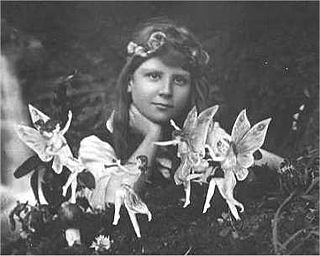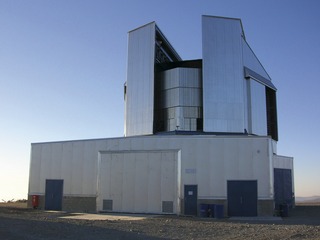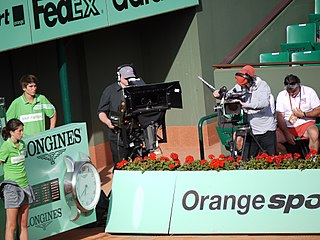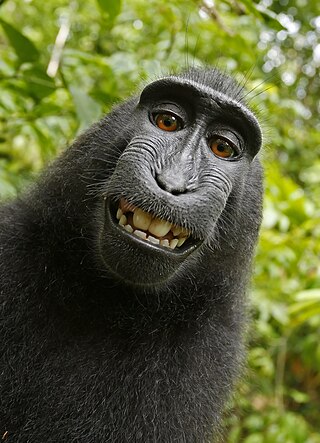Related Research Articles

The Cottingley Fairies appear in a series of five photographs taken by Elsie Wright (1901–1988) and Frances Griffiths (1907–1986), two young cousins who lived in Cottingley, near Bradford in England. In 1917, when the first two photographs were taken, Elsie was 16 years old and Frances was 9. The pictures came to the attention of writer Sir Arthur Conan Doyle, who used them to illustrate an article on fairies he had been commissioned to write for the Christmas 1920 edition of The Strand Magazine. Doyle, as a spiritualist, was enthusiastic about the photographs, and interpreted them as clear and visible evidence of psychic phenomena. Public reaction was mixed; some accepted the images as genuine, others believed that they had been faked.
Kathleen Norris Stark, better known as Koo Stark, is an American photographer and actress, known for her relationship with Prince Andrew. She is a patron of the Julia Margaret Cameron Trust, which runs the museum of the Victorian pioneer photographer.

Photography is the art, application, and practice of creating images by recording light, either electronically by means of an image sensor, or chemically by means of a light-sensitive material such as photographic film. It is employed in many fields of science, manufacturing, and business, as well as its more direct uses for art, film and video production, recreational purposes, hobby, and mass communication. A person who captures or takes photographs is called a photographer.

A photographer is a person who uses a camera to make photographs.

Photojournalism is journalism that uses images to tell a news story. It usually only refers to still images, but can also refer to video used in broadcast journalism. Photojournalism is distinguished from other close branches of photography by having a rigid ethical framework which demands an honest and impartial approach that tells a story in strictly journalistic terms. Photojournalists contribute to the news media, and help communities connect with one other. They must be well-informed and knowledgeable, and are able to deliver news in a creative manner that is both informative and entertaining.

The VISTA is a wide-field reflecting telescope with a 4.1 metre mirror, located at the Paranal Observatory in Chile. It is operated by the European Southern Observatory and started science operations in December 2009. VISTA was conceived and developed by a consortium of universities in the United Kingdom led by Queen Mary University of London and became an in-kind contribution to ESO as part of the UK's accession agreement, with the subscription paid by the UK Science and Technology Facilities Council (STFC).

The "tourist guy" was an internet phenomenon that featured a photograph of a tourist on the observation deck of the World Trade Center digitally altered to show a plane about to hit the tower in the background during the September 11 attacks. The photo went viral in the days after the attacks as many manipulated pictures spread online. The man in the photograph was identified as Hungarian Péter Guzli, who took the photo in 1997. Guzli said he edited the photo as a joke for his friends and did not intend for it to spread across the internet.

Arctic Monkeys are an English rock band formed in Sheffield in 2002. The group consists of lead singer Alex Turner, drummer Matt Helders, guitarist Jamie Cook and bassist Nick O'Malley; bassist and co-founder Andy Nicholson left the band in 2006.

Longleat Safari and Adventure Park in Wiltshire, England, was opened in 1966 as the world's first drive-through safari park outside Africa.

Spirit photography is a type of photography whose primary goal is to capture images of ghosts and other spiritual entities, especially in ghost hunting. It dates back to the late 19th century. The end of the American Civil War and the mid-19th Century Spiritualism movement contributed greatly to the popularity of spirit photography. The omnipresence of death in the Victorian period created a desire for evidence of the afterlife, and those who partook in Spirit Photography oftentimes hoped to receive images that depicted the likeness of a deceased relative or loved one. Photographers such as William Mumler and William Hope ran thriving businesses taking photos of people with their supposed dead relatives. Both were shown to be frauds, but "true believers", such as Sir Arthur Conan Doyle, refused to accept the evidence as proof of a hoax.

Meerkat Manor is a British television documentary produced by Oxford Scientific Films that premiered in September 2005. Originally broadcast on Animal Planet International for four seasons, until its cancellation in August 2008, the programme had a revival in 2021 with the programme now known as Meerkat Manor: Rise of the Dynasty in some countries. Using traditional animal documentary style footage along with narration, the series told the story of the Whiskers, one of more than a dozen families of meerkats in the Kalahari Desert being studied as part of the Kalahari Meerkat Project, a long-term field study into the ecological causes and evolutionary consequences of the cooperative nature of meerkats. The original programme was narrated by Bill Nighy, with the narration redubbed by Mike Goldman for the Australian airings and Sean Astin for the American broadcasts. The fourth series, subtitled The Next Generation, saw Stockard Channing replacing Astin as the narrator in the American dubbing. In 2021, Nighy could be heard narrating the new series of Meerkat Manor when it was broadcast in the United States on BBC America and on Channel 5 in the United Kingdom, making it the first time that both television markets have used the same voice over on the programme.
The 2006 Lebanon War photographs controversies refers to instances of photojournalism from the 2006 Lebanon War that misrepresented scenes of death and destruction in Lebanon caused by Israeli air attacks.

Meerkat Manor: The Story Begins is a 2008 television film created by Discovery Films and Oxford Scientific Films as a prequel to the Animal Planet series Meerkat Manor. A scripted documentary narrated by Whoopi Goldberg, the film details the life of a meerkat named Flower from birth to her becoming the leader of a meerkat group called the Whiskers. The film is based on the research notes of the Kalahari Meerkat Project and primarily uses wild meerkat "actors" to represent those in the story. Shot over two years at the Kuruman River Reserve in Northern Cape, South Africa, the film employed a much larger crew than the series. Some scenes were shot at a wildlife park in the United Kingdom, while others were created using camera tricks and trained film animals.
Oxford Scientific Films (OSF) is a British company that produces natural history and documentary programmes owned by ITV Studios. Founded as an independent company on 8 July 1968, by documentary filmmaker Gerald Thompson, it broke new ground in the world of documentaries, using new filming techniques and capturing footage of never before filmed activities of its various subjects. In 1996, Oxford Scientific Films was sold to Circle Communications, where it retained its own identity as a division within the company. The following year, Circle Communications was taken over by Southern Star Entertainment UK. Under the new ownership, Oxford Scientific Films produced multiple award-winning programmes and films, including the Animal Planet series Meerkat Manor.
Maciej Dakowicz is a Polish street photographer, photojournalist and gallerist. He is from Białystok in North East Poland. Dakowicz is best known for his series of photographs of Cardiff night-life titled Cardiff after Dark. He and others set up and ran Third Floor Gallery in Cardiff and he was a member of the In-Public street photography collective.
Geoffrey Crawley was a photographic expert and journalist, and was the editor in chief of British Journal of Photography for two decades. He was noted for exposing the photographs of the Cottingley Fairies taken in the early 20th century as a hoax.
Anthony Gordon Boxall, FRPS was a British amateur photographer, known for his portrayal of Gypsy life in Britain in the early 1960s.

A selfie is a self-portrait photograph or a short video, typically taken with an electronic camera or smartphone. The camera would be usually held at arm's length or supported by a selfie stick instead of being controlled with a self-timer or remote. The concept of shooting oneself while viewing their own image in the camera's LCD monitor is also known as self-recording.

Stereo photography techniques are methods to produce stereoscopic images, videos and films. This is done with a variety of equipment including special built stereo cameras, single cameras with or without special attachments, and paired cameras. This involves traditional film cameras as well as, tape and modern digital cameras. A number of specialized techniques are employed to produce different kinds of stereo images.

Between 2011 and 2018, a series of disputes took place about the copyright status of selfies taken by Celebes crested macaques using equipment belonging to the British wildlife photographer David J. Slater. The disputes involved Wikimedia Commons and the blog Techdirt, which have hosted the images following their publication in newspapers in July 2011 over Slater's objections that he holds the copyright, and People for the Ethical Treatment of Animals (PETA), who have argued that the copyright should be assigned to the macaque.
References
- 1 2 3 Roy Greenslade (7 September 2007). "Exposed: meerkat pictures were 'a slight hoax'". The Guardian. UK. Retrieved 7 September 2007.
- 1 2 3 4 5 6 7 Simon de Bruxelles (6 September 2007). "That's what you call wildlife photography". The Times. UK. Archived from the original on June 29, 2011. Retrieved 11 February 2011.
- ↑ Patrick Barkham (7 September 2007). "The human zoo". The Guardian. UK. Retrieved 7 September 2007.
- 1 2 3 4 Matthew Moore and agencies (5 Sep 2007). "Longleat Meerkats take photos of themselves". The Daily Telegraph. UK. Archived from the original on 28 May 2011. Retrieved 11 February 2011.
- ↑ Richard Smith (6 September 2007). "Monty the Meerkat's photo album". Daily Mirror. UK.
- ↑ "Monty the Meerkat took wildlife snaps using an EOS 650, reports UK press". Amateur Photographer. 6 September 2007. Archived from the original on 23 July 2011. Retrieved 11 February 2011.
- 1 2 Chris Cheesman (6 September 2007). "Exposed: Meerkat photo story was a 'hoax'". Amateur Photographer. Archived from the original on 23 July 2011. Retrieved 11 February 2011.
- ↑ Ian Jones (6 September 2007). "The meerkat that 'took photos'". MSN. Archived from the original on 14 July 2011. Retrieved 6 March 2011.